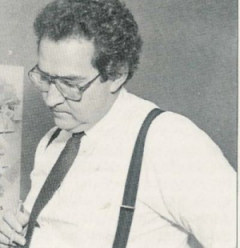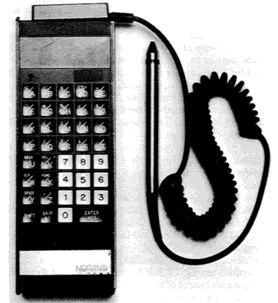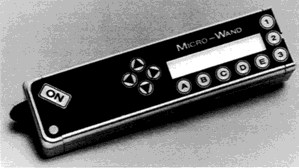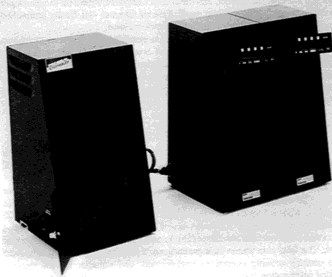Scanning, Tracking & Tracing Packages
When I arrived at FedEx in 1980 to do the DADS system I had to learn about COSMOS which was the Computer system software that allowed customers to call in for a package pickup and talk Customer Service requesting supplies, billing and where their packages were.
To find out if a package had been delivered that week, the customer agent had to send a message to the origination or destination station asking them to look around for the package or to ask the courier about the delivery.
There really wasn't an 'email' system as we know today. FedEx used 'Message Switch' which is more like 'texting' we use today. The agent would enter a destination station number (example MEMA01) and a destination station (ex CHI02), which were usually somewhat like airport identifiers the airlines use.
The message would be sent across the FedEx network and to the station printer.
The station personnel would tear off the messages and go investigate.
--------------------
The Vision
I quickly learned about the Vision that FWS had for the future of tracking and tracing packages. The company was going to use the airbill bar codes and Scan the package barcode whenever it changed hands. Eventually, COSMOS would 'know' where every package was, where it was going, and if it was being transported on a route that was incorrect thru the FedEx system.
This scan information would be kept in COSMOS and be available to the customer agent whenever the Customer called. A package would have multiple scans and be tracked from pickup to delivery.
The vision eventually included a FWS statement:
'In the future, the information about the Package will become as important as the Package itself'
The statement reflected that shippers and receivers would start relying on this shipment information for their business.
I was busy on the DADS software, but the first thought that crossed my mind was
'we pick the package up by 5pm and it is delivered by noon the next day….why would anyone want to do this??'
As this system evolved, I decided it was a brilliant and visionary idea.
COSMOS IIa & COMOS IIb
Tom Bullion was the initial implementor of COSMOS IIa (scanning at the hubs and stations)
Tom's Comments(edited):
"A former Manager's idea of a tracking system was to have an airbill with tabs on it and holes in the tabs. When a courier/hub/courier had the package they would tear off a tab off and put it on a ring. Then at the end of the day enter the airbill # in the Datacom (IBM TTY) system from the tabs (couriers would have loved that one).
Larry Stoltenberg came up with the idea of barcodes.
I took over Larry’s concept and developed a hand held scanner with Norand."
 |
The project to implement tracking, was led by Harry Dalton in a group eventually known as SIS or Strategic Integrated Systems. Harry had previously worked for UPS.
|
In 1980 only a few handheld devices existed that could be used. Most were for inventory or grocery stores and had an attached wand. They weren't really that portable.
It was decided to split the project into two parts and use limited scanning of the packages in the stations and at the Memphis hub. This was to be called 'COSMOS IIA'. When smaller courier type devices where available, the next phase would scan packages at pickup and deliver at customer locations. This system became known as COSMOS IIb.
COSMOS IIa Operations
 |
A device known as the Norand HHT was initially used to scan at the Stations and the Memphis Hub
|
The Colorado Springs development group led by Jim Tollefson expanded COSMOS to now include a database of package tracking information associated with each airbill shipment.
As packages arrived at the origin city station, the airbills were all scanned and transmitted to Memphis IT center thru a dial up link. If packages came in late, a copy of the airbill was pulled out of the pouch and the airbills scanned in bulk that night.
The application to receive the scans into Memphis was done by Les Wilcox and Winn Stephenson and was called the ICD.
Note: The development of the ICD was a major project to collect all the scan information. The ICD used an available IBM 3705 and multiple dial lines. Since I was developing communications software for Dads, I discussed with Harry the idea of developing a small microprocessor board and connecting the the online SNA network. It would take two months. Harry agreed that would be a good solution, but they were rolling out immediately. Later, in COSMOS IIb, that solution was used and called the SMARTBASE and PC-BASE.
At Memphis, if there were any packages left at the hub, these were scanned and called 'exception scans' and transmitted to COSMOS. There were few packages left in Memphis each night but reasons could be the plane came in late, the outbound plane was already full, or the package might have a wrong or bad address on it.
When packages arrived the next morning, all packages at the station were again scanned and transmitted to COSMOS. All packages would then be delivered by noon.
If a customer called the agent could now tell them that the package was in the origin city, destination city, in the Memphis hub, or possibly in the wrong city…if the customer put the wrong city code or city on the airbill.
Eventually FedEx released a statement to customers that we would tell you where your package is within 30 minutes of their call. COSMOS IIa provided this capability.
This was a Major accomplishment in the transportation industry, never having been done before and put FedEx on the Vision that FWS had defined as necessary to distinguish FedEx in the Industry.
Skype Interview #2 w/ Bob Higgins COS Development Scanning Development
|
Skype Interview #3 w/ Bob Higgins COS Development Scanning Development
|
COSMOS IIb
COSMOS IIa was very successful and was done with a limited number of scanners and subsystems.
It provided a unique and expedited way to give Customers information about their shipments. In most all cases, the agent didn't have to send messages to the station to tell the customer about his package,, it was on the COSMOS screen at any time.
The number of drivers around this timeframe was about 10,000.
Harry Dalton's department which was about a dozen staff, began research on a small, pen-sized device with a scanner tip that could be used by the couriers. The COS development staff evaluated hardware and helped shape prototypes.
Developers included Jim Turpin, Pat Mulvey, David Dietzel and Bob Higgins.
The original goal was a scanner the size of a ball point pen. This later involved to a display and keyboard to allow the courier to type in the name of the person who received the package. The display also allowed the courier to access routing information, versus carrying around a book of all the station identifiers.
COSMOS IIb would greatly expand the information known about the package.
 |
 |
|
One of the original prototypes |
Another Prototype |
FedEx SuperTracker |
The PickUP Scan (PUPS)
Upon picking up the package at the customer location, the courier would scan the airbill. This would produce a scan record or PUPS(PickUp Scan) in the device.
 |
Norand Smartbase Originally the plan was that all the pickup information would be transferred from the IIb scanner at the station in the afternoon and sent to COSMOS using a series of racks to shoe the SuperTrackers. This project was delayed. An internal development led by Kurt Wulff & Gary Pantlik developed an alternative system after deployment that utilzed the same racks but connected to off the shelf PC's. That project was known as the PC-Base.
|
An alternative connectivty plan.
Jim Moore had a 'shoe' inter-connected to the wireless Dads terminal. This allowed the courier to go back to the Van, insert the scanner or now called SuperTracker, and info would be sent to the local DADS server and to COSMOS in about a minute. This provided real time updates to COSMOS minutes after the package was delivered. Customer Service now could tell customers the time the package was delivered and who signed for the package.
(the story goes,,, the project to put scans over the wireless was a secret project. Management did not want stray efforts diverting attention away from making the Smartbase solution work; Jim though was a rebel and proceeded out of sight and made the system work. This provided the intial connectivity due to delays in making the sna software work correctly on the smartbase system)
SIPS/SOPS
When all the packages arrived at the station, there would still be a mass scan on every airbill at the station. This info was transmitted to COSMOS that night. Stations from the vans into the station were called SIPS(Station Inbound Scans); Scans from the Aircraft going to the Vans were called SOPS(Station Outbound Package Scans)
VANS
Later scans were added by each courier who scanned the packages into their own vehicle. These were called VAN scans, and within minutes COSMOS had information on which truck had the package and which courier was delivering each package.
The Delivery Scan
The next day, when the packages were unloaded from the aircraft, there was a mass scan of all airbills. This info was sent to COSMOS first thing in the morning.
Packages were loaded on the vehicles. As packages were delivered to the Customer, the courier would scan the package and then type in the name of the person receiving the package. The courier would go to the van, insert the tracker into DADS and the info would be in COSMOS in a minute or two.
At the point COSMOS had complete information about the package and the customer service agent could provide it to the customer.
For those customers who had an automation device, tracking information was becoming available to them as their devices connected into FedEx.
The Scan Format
The package scan records should be defined a little more because they provided some unique information.
The courier would usually just scan the package on pickup. Later this evolved to collecting more info about the package such as the destination zip code, type of service and even weight.
The scanner, tracker and launched as the 'SuperTracker' software would insert the origination Station, courier info and other time stamp info.
The record included several timestamps. Some of these were 1) time when package was actually picked up, 2) time courier inserted SuperTracker into the Dads terminal 3) when the DADS server transmitted the info, and 4) time that COSMOS actually posted the info.
This required synchronization of the clocks in the SuperTracker, DADS Server and COSMOS.
Later complete routing information and package services info was added.
Early on, couriers would write on the package the destination Airport identifier for the package by looking it up in a guide they carried. This evolved to routing in the SuperTracker for lookup and then writing on the package with a marker.
Eventually this evolved to development of a Courier Printer.
As the Automation/Powership program expanded with more customers preparing their own labels automatically, the routing would be automatically printed on the label. For airbill customers, the courier would enter origin and destination zips, product type and other information, the tracker would generate label and barcode information and transmit it to the courier printer. A label would be generated at the customer site or courier van.
The entire scanning scheme began to be called 'custodial scanning'. Concept was that the scans provided the routing and care of the package by alerting the system where the package was, and what routes it was passing thru.
Eventually more scans were generated as FedEx evolved out of a single hub concept.
With metroplex hubs and ramp locations, scans were generated in and out of those facilities.
Packages eventually were scanned as they were put into Airline containers for various aircraft or trucks. The system knew in which containers and which aircraft or trucks packages were being transported.
For example in inclement weather if there were delays of an aircraft, Customer service agents knew all the packages affected by those delays.
Tidbits: Naming conventions
At one point in the mid 80's some guidelines for naming projects were re-iterated by Ron Ponder the CIO at the time.
We had a lot of astronomical type names, COSMOS, Saturn, Mars, Zodiac and others which were acceptable.
Several projcts were being added to, such as COSMOS, COSMOS IIa, COSMOS IIB, COSMOS III, COSMOS IIc; word came down that if it was a scanning project…it would be known as just COSMOS IIB
Also, animal names were out….
Some groups had acronym computer generators that would generate thousands of possible meanings of a name you gave it; it was very interesting at the time.